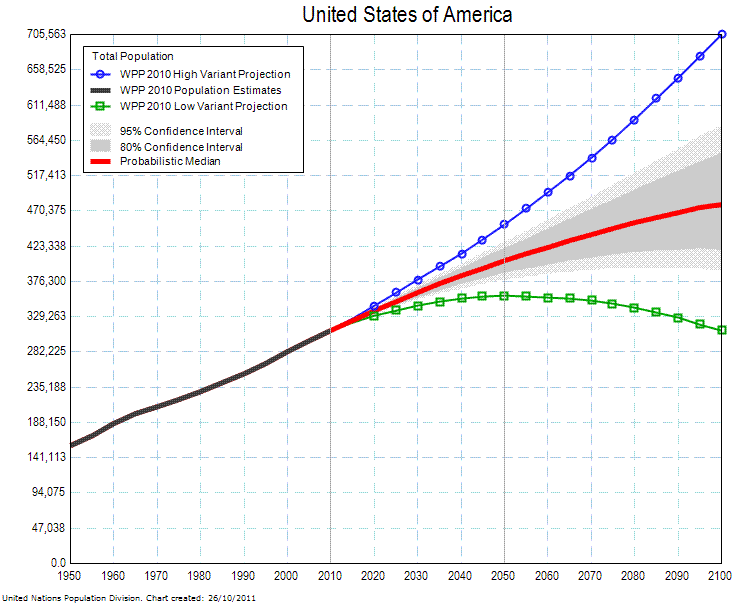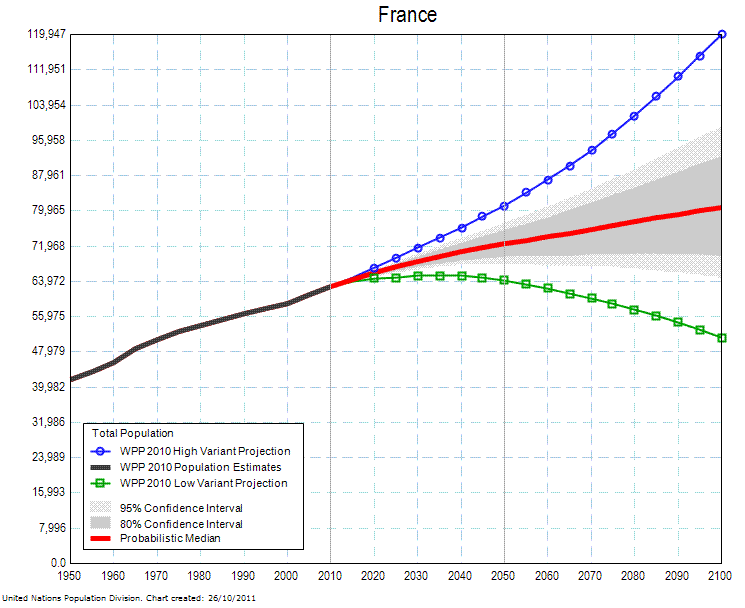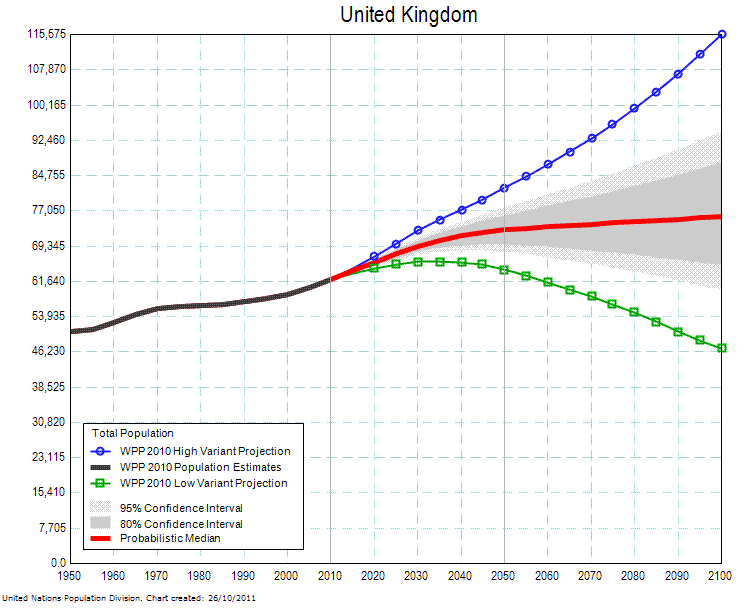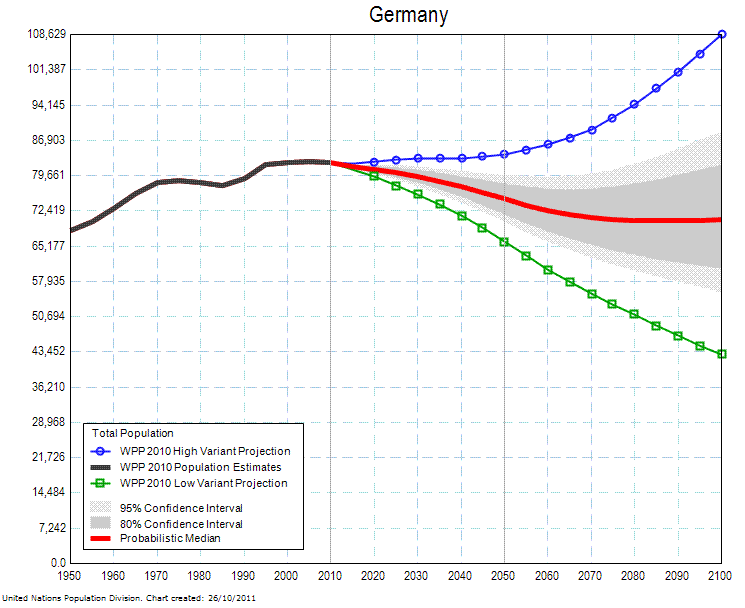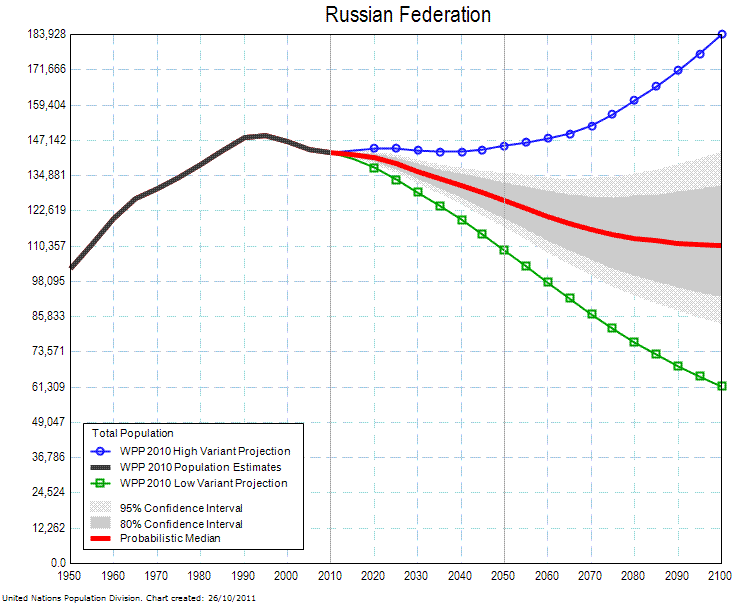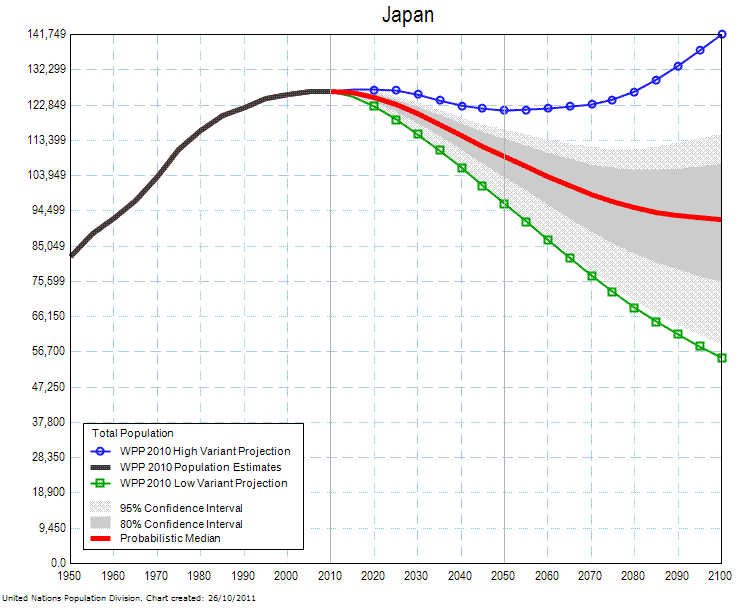Declining population is considered by some to be beneficial for "the environment". On the other hand, declines are considered by some to be detrimental to economic activity. Is there a way to maintain or improve quality of life and prosperity as population growth slows, levels out, or declines?
Perhaps options will be considered during two meetings this week: a Bank of Japan Monetary Policy meeting and a G 20 meeting. Population change and G8 industrialized nations were highlighted last year in a statement from Statistics Canada.
"Canada's population increased at a faster rate than the population of any other member of the G8 group of industrialized nations between 2006 and 2011." 1
The recently elected Prime Minister of Japan, Shinzo Abe, made "outspoken demands that the Bank of Japan promote growth and inflation by pumping more money into the Japanese economy." 2
Let's take a look at the G8 nations population estimates and projections from the United Nations3, in light of Statistics Canada comparison and Japan's Prime Minister Abe's comment.
Source: United Nations, Department of Economic and Social Affairs, Population Division (2010): Population projections using probabilistic projections of total fertility and life expectancy at birth, based on a Bayesian Hierarchical Model (BHM). New York (internal data set).3
Japan leads the G8 with declining population [projection*]. Yet even Canada will likely experience lower growth rates. Eventually, Canada may even achieve a stable level population. Projections show Canada's total population levelling out at around 50 million people by 2100.
Many issues arise due to the shift from high child dependency to high elderly dependency.
"The large percentage of Japanese sovereign debt maturing over the next few years could not have come at a worse time as Japan’s Baby Boomers retire and pension funds begin to make payouts rather than accumulate assets."4
"Japan has a very low fertility rate of 1.2, and life expectancy is among the highest in the world. The Japanese population is getting older, and this means lower savings as people start spending their retirement funds instead of saving their money for the future."5
"Japan has not seen this kind of sustained deflation since the 1930s." 6
The population projection charts show population growth is slowing, with many G8 countries experiencing declines.
Population change is fundamental to the economic issues impacting the G20 nations, including efforts to devalue the Yen.
This week, a Bank of Japan Monetary Policy meeting and the G 20 meeting will be held.
Perhaps ways will be found to increase prosperity while population growth slows, levels off, or even declines
* UN does projections at the national level to 2100 (edit added September 23, 2013).
1The Daily, 2011 Census: Population and dwelling counts, Wednesday, February 8, 2012 http://www.statcan.gc.ca/daily-quotidien/120208/dq120208a-eng.htm.
A newspaper with nation wide distribution, the National Post, contained the following statements "Canada Census 2011: Canada leads G8 in growth, population hits 33.5 million ... a country that remains firmly in the grip of a westward shift in population power ... the Canadian population remains the smallest among the G8 but by far the fastest growing." (February 8, 2012), http://news.nationalpost.com/2012/02/08/canada-census-2011-canadas-leads-g8-in-growth-population-hits-33-5-million/.
Author's Comment: Measuring "fastest growth" usually refers to growth rate in terms of percent. If you have a small population ... let's say 1 person and the next year you have 2 people than the growth rate is 100%. A country like the USA may have a far larger increase in the number of people compared to Canada, but Canada can show a larger percent growth just because it has a smaller population.
2 The Wall Street Journal, Updated February 8, 2013, 4:02 p.m. ET, .U.S. Treasurys, Japanese Yen Part Ways . By CYNTHIA LIN http://online.wsj.com/article/SB10001424127887324590904578292283585065640.html
3 Source: United Nations, Department of Economic and Social Affairs, Population Division (2010): Population projections using probabilistic projections of total fertility and life expectancy at birth, based on a Bayesian Hierarchical Model (BHM). New York (internal data set). http://esa.un.org/unpd/ppp/index.htm
Update history: 22 September 2011 (first upload); 26 October 2011 (to replace 85% confidence interval with 80% confidence interval for consistency)
4 "For the first time in nine years Japan’s Government Pension Investment Fund (GPIF), the world’s largest pension fund, sold a net 443.2 billion Yen of Japanese government bonds (JGB) in its fiscal 2009 to March 2010 as rising benefit payouts exceeded pension reserves (article link). This is a major concern for Japan as the GPIF owns nearly 12% of all outstanding JGB and has been a major buyer of JGB for decades and is now transitioning to a seller of JGB and plans to sell $108 billion worth of assets between 2012-2013, a large portion of which will include JGB to generate cash to meet pension payouts (article link).In the fiscal 2010-2011 year the GPIF sold 4.77 trillion yen worth of assets, of which 91.61% were JGB." from Massive Japanese Debt Monetization Is Coming, Yen to be Devalued, By Chris Puplava, 06/29/2012 http://www.financialsense.com/contributors/chris-puplava/massive-japanese-debt-monetization-is-coming-yen-to-be-devalued
5 How to Profit from a Devaluation of the Yen, By Andrés Cardenal, November 24, 2012, http://beta.fool.com/acardenal/2012/11/24/how-profit-devaluation-yen/17180/
6The Yen's Looming Day of Reckoning: Japan looks set to depress the value of the yen to boost trade:, how China must brace itself for the impact, Caixin Media Company, 03.23.2012 15:27, http://english.caixin.com/2012-03-23/100372177.html
Related reading: A Comparison of Population Projections for Canada
